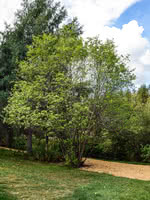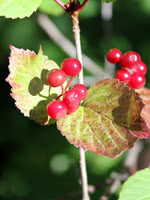Mon-Fri 9am - 5pm Mountain time
Grey Alder vs Lowbush Cranberry
Alnus incana
Viburnum edule
NOT AVAILABLE THIS SEASON - MIGHT RETURN
NOT AVAILABLE THIS SEASON - MIGHT RETURN
River Alder is a large shrub or small tree with a multi-stemmed, spreading habit. It is an excellent tree to plant if you want to stabilize the soil near rivers and creeks.
Unlike the other alder varieties, River Alder is attractive enough to be included in riverside plantings by municipal and provincial park organizations.
Note: We use Grey Alder for Alnus incana. This species is also known by many other common names, including River Alder, Speckled Alder, and others. Please confirm the scientific name to ensure you are ordering the correct plant.
Lowbush Cranberry is a short, deciduous shrub native to North America. Its white flowers bear sour but edible fruit that ripens to a brilliant red in fall. Lowbush Cranberry's small size makes it suitable for urban use; buyers will also find it useful if trying to reclaim land back to its original species or when landscaping with native species in damp conditions.

